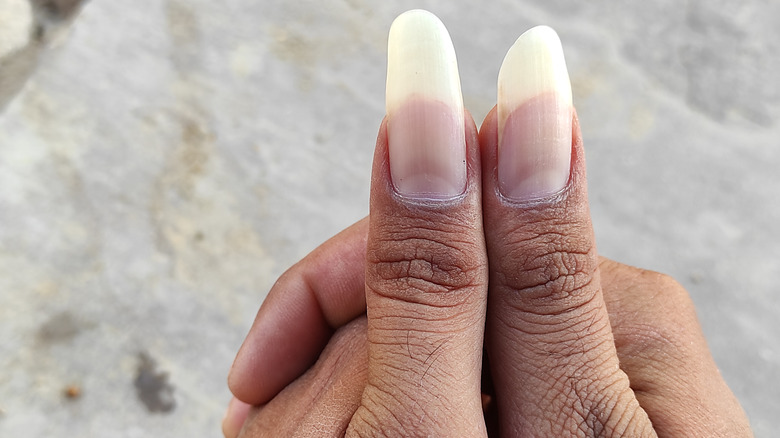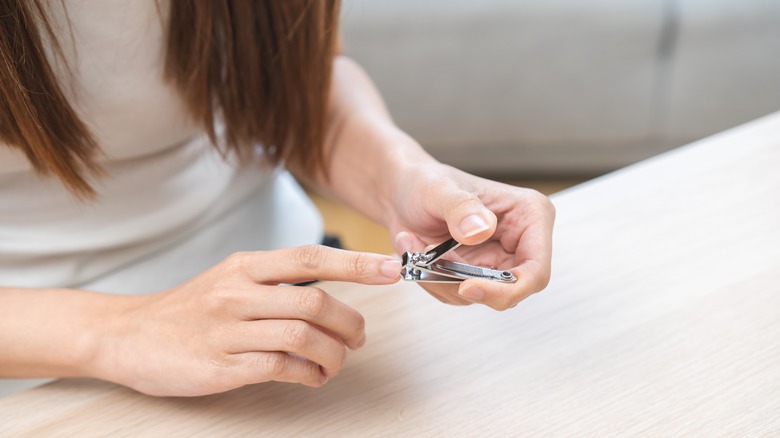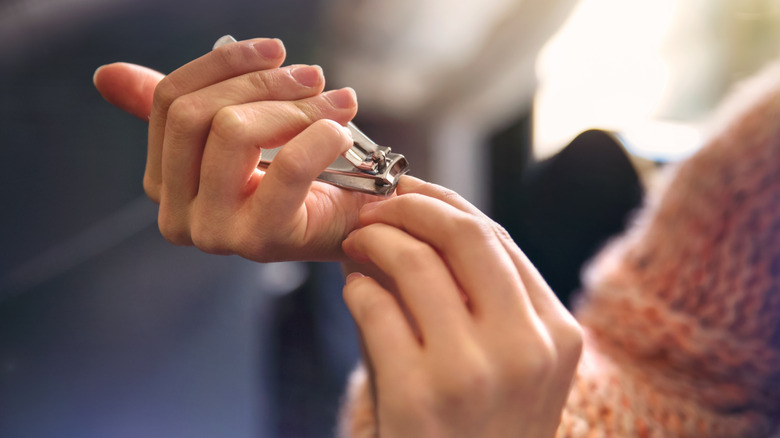What Happens If You Don't Cut Your Nails?
Nails are not only an indication of your overall health but also one of the best ways to express your style. Whether you prefer long and intricate manicures, short and bold styles, or minimalist-favored looks like the classic French manicure, your nails can show off your personality very well — as long as you keep them clean and maintained. Even if you prefer to go polish-free, practicing nail hygiene is key to keeping your nails healthy and looking their best.
According to Dr. Brendan Camp, double board-certified dermatologist of MDCS Dermatology, cutting your nails regularly is super important for maintaining healthy claws. "Nails will continue to grow if left unattended," he explains exclusively to Glam, adding that nails that are left to grow endlessly may end up developing a condition called onychogryphosis, which typically manifests in the form of "long, thick, rough, [and] yellow nails."
"Nail hygiene is important for proper nail growth and to prevent complications like infections," he says. That said, you can still have healthy long nails as long as you regularly file and trim them, but there are several benefits of frequently cutting them so they don't grow too long.
What are the main benefits of regularly trimming your nails?
The main benefit of staying on top of your nail cutting is the avoidance of conditions like onychogryphosis, where the nails thicken to the point of becoming unmanageable, but Dr. Brendan Camp reveals that there are other advantages of keeping up this practice, too. "Trimming nails helps keep them healthy, clean, and presentable," he says in our exclusive conversation. "When nails are not attended to, they can accumulate debris and dirt, and are predisposed to bacterial infections (paronychia), fungal infections (onychomycosis), and ingrowns (onychocryptosis)."
There are several factors that go into getting the strongest and healthiest nails possible, including eating a balanced diet, staying hydrated, avoiding irritants and harsh ingredients, and opting for natural nails over acrylics. Keeping them trimmed — they don't have to be short, just tended to — is only one piece of the puzzle, but it's a vital one.
How often should you trim your nails?
Like many things, nail growth varies from person to person, so there's no one-size-fits-all answer to how often you should cut them. As a general rule of thumb, though, Dr. Brendan Camp recommends trimming them every two weeks at the most. Keep an eye on your growth, since you might need to trim them more frequently if your nails are prone to growing quickly, and Dr. Camp confirms that some people need to cut them every week.
While keeping them extremely short isn't necessary in order to keep them healthy, some people prefer short nails because of the benefits they bring, including the practicality of finishing daily tasks with ease and avoiding painful broken nails. Just be aware that going too short with your trimming may cause more harm than good. "The hyponychium is the end of the nail bed, or skin underneath the nail," Dr. Camp shares exclusively with Glam. "Beyond the hyponychium, the nail develops an opaque white color. Trimming nails behind the hyponychium can expose the nail bed to injury and cause pain."
Nail style is a deeply personal and fun way to get in touch with who you really are, and the good news is there's a very broad spectrum of what's considered healthy. As long as you're not cutting your nails so short that you're exposing the skin underneath or forgetting to regularly trim them at least every two weeks, you have a wide variety of nail lengths, shapes, and styles to play with.


